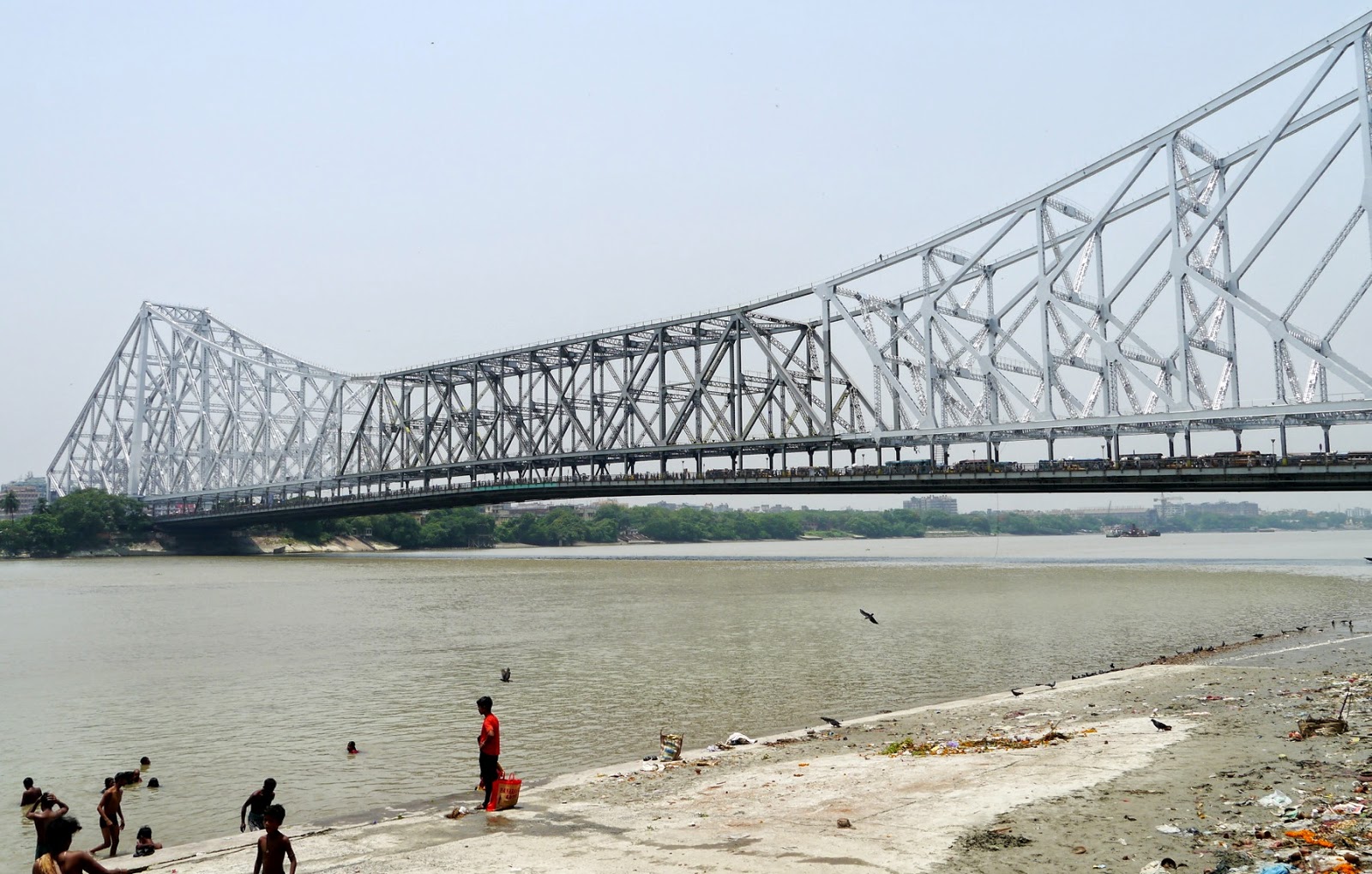Wednesday 21st May 2014
Flying into Varanasi this evening as the sun set over the
broad curves of the Ganges and its vast plains was quite a sight to behold. It
was also a great relief to be leaving Kolkata. Don’t get me wrong, the city has
a fascinating history and some beautiful sights, but so many drawbacks that
I’ll be in no hurry to return. It’s known as the ‘City of Joy’. I don’t know
how old this nickname is, but it certainly seems outdated. Kolkata, or Calcutta
as it used to be known, is one of India’s great urban centres. It was the
capital of the British Raj before the move to New Delhi, and perhaps once the
greatest colonial city of the Orient, with traders flocking from across the
east in the past, contributing to its cosmopolitan population. However, since
Independence and various events throughout the twentieth century, huge numbers
of migrants and refugees have pushed the city and its infrastructure to its
limits, resulting in widespread, extreme poverty, horrendous traffic, and
terrible pollution. The climate at this time of year was also extremely unpleasant.
Still, I
did venture out as much as possible during my few days in Kolkata, in order to
admire its array of beautiful (if mostly crumbling) Victorian architecture, and
experience its hectic atmosphere. My first stop were the ghats along the
Hooghly River near the mighty Howrah Bridge (the world’s third longest
cantilever bridge at 705m). I wasn’t sure what to expect exactly, but apart
from great views of the bridge, all that I encountered were slums, rubbish, and
people bathing in the filthy river. I didn’t know where to look, or how to
react exactly. Standing there with a camera snapping away pictures of the
bridge while children openly defecated into the river a few metres away. I must
have looked quite ridiculous.
 |
| Howrah Bridge. |
After
dragging my feet through the old city (and the humidity), admiring the grand
edifices that once contained the administrations and businesses that made this
bastion of imperialism tick, I visited perhaps the most spectacular colonial
edifice in the city and Kolkata’s pride and joy: the Victoria Memorial. The extraordinary white marble
structure was conceived by Lord Curzon and finished in 1921. It’s set in
beautiful gardens, which include ponds and shady gravel paths – it’s actually
rather green and lush, for an Indian park. The museum inside contains various
momentoes of British Imperialism, as well as some fascinating paintings,
documents and photographs about life in the city and the Independence struggle.
 |
| Victoria Memorial. |
Just
across the road is St. Paul’s Cathedral, built in 1847. The Gothic structure is
quite beautiful, and contains a lovely window by Sir Edward Burne-Jones. Sadly,
I wasn’t allowed to take any pictures, and the nave was closed to visitors.
Of
course, I need to mention food. The weather in Calcutta really killed my
appetite, but I did take advantage of the fact that there is a large Chinatown,
where I had some delicious dishes. Before I forget, something I did love about
Kolkata: the taxis. They’re all bright yellow Hindustan Ambassadors, and very
cheap. The roads are basically streams of yellow – fantastic.
 |
| Calcutta cab ride. |
Next up
was the Indian Museum. Billed as India’s oldest and largest museum, designed by
an Italian architect and built in 1814, I was expecting something impressive. I
was very much disappointed. There were a few ‘nice’ galleries of textiles and
archaeological finds, but it was mostly just big, old, and very dusty cases of
all-very-grey-and-the-same-looking fossils, in stuffy, dingy galleries. The
zoological displays were simply terrible, with most of the specimens looking
older than the museum itself. The marine dioramas were particularly
giggle-inducing, with their discoloured googly-eyed stuffed fish pinned to blue
walls, ‘swimming’ with bemused expressions on their faces.
 |
| The impressive Indian Museum... |
 |
| ...and its not-so-impressive zoological collection. |
For me,
Kolkata was a little disappointing. Maybe I need to experience it during the
winter, or with a local, but still, I think something needs to be done about
its over-stressed urban infrastructure and extreme poverty before it can become
the glorious metropolis that it has the potential to be.

No comments:
Post a Comment